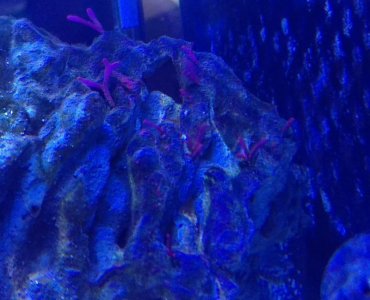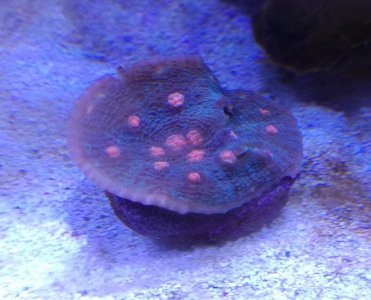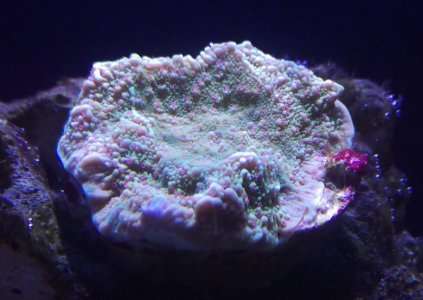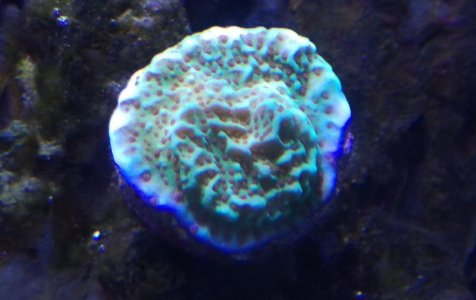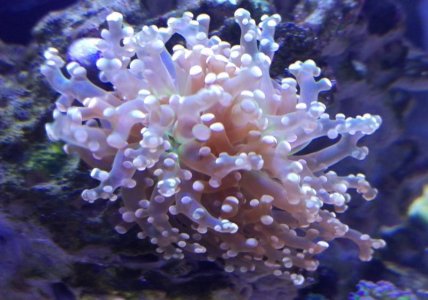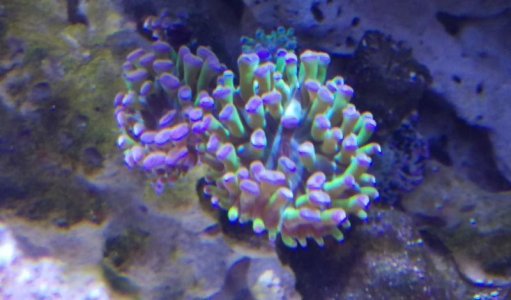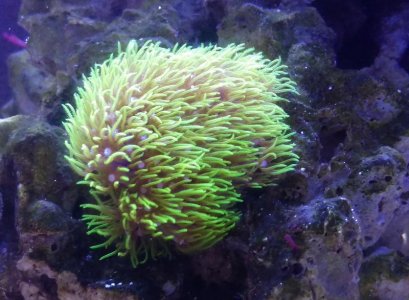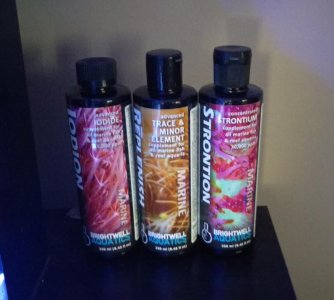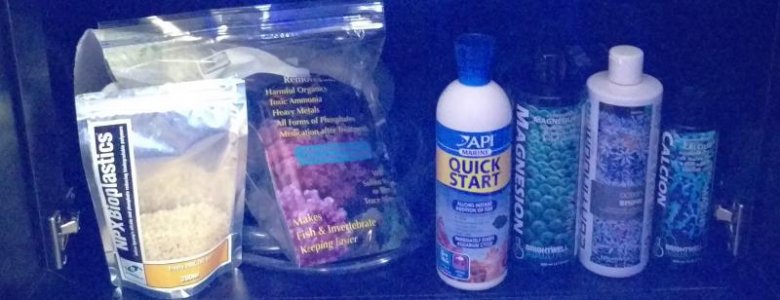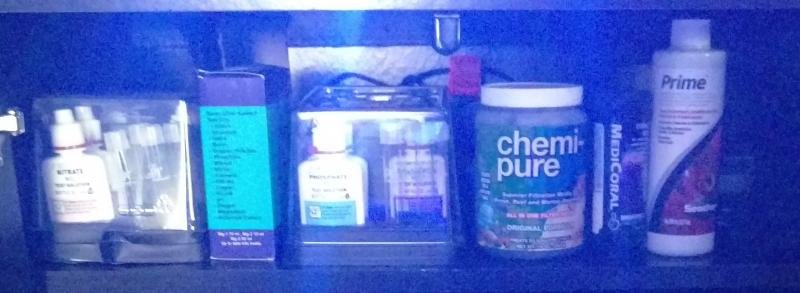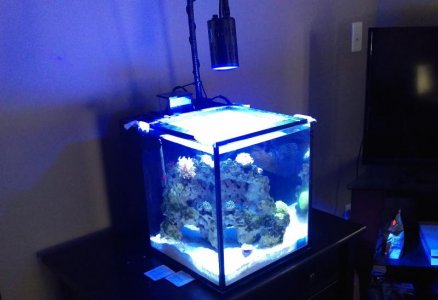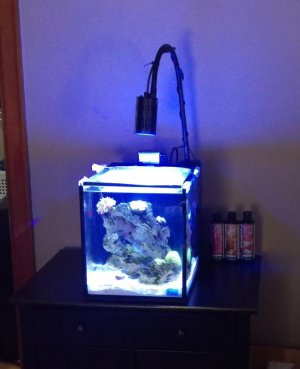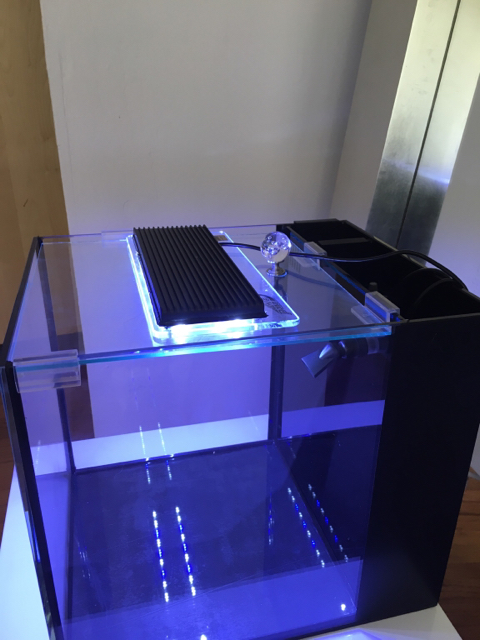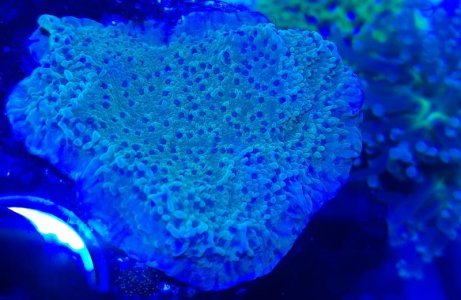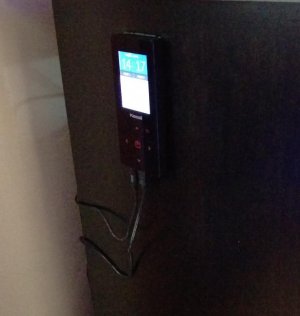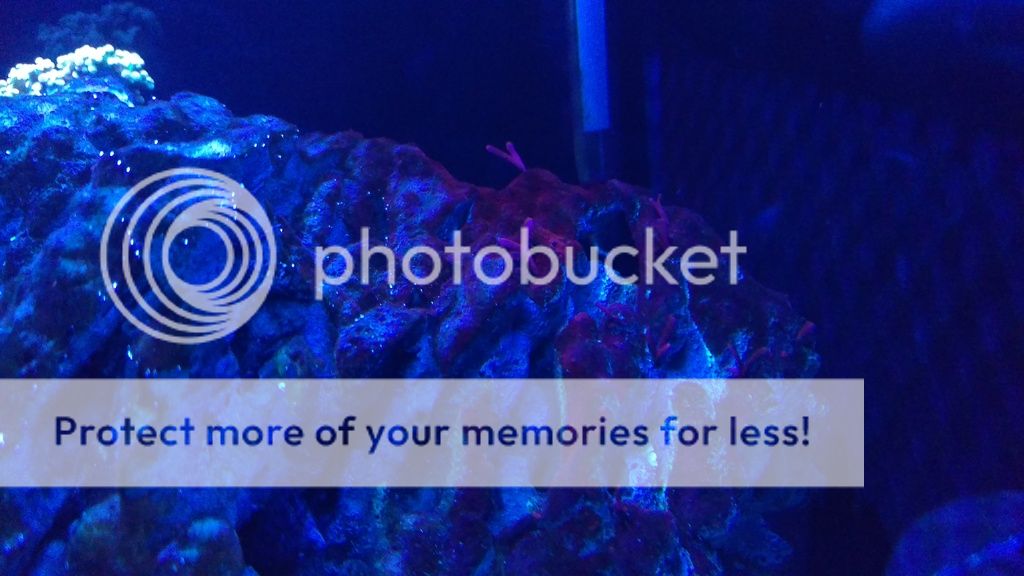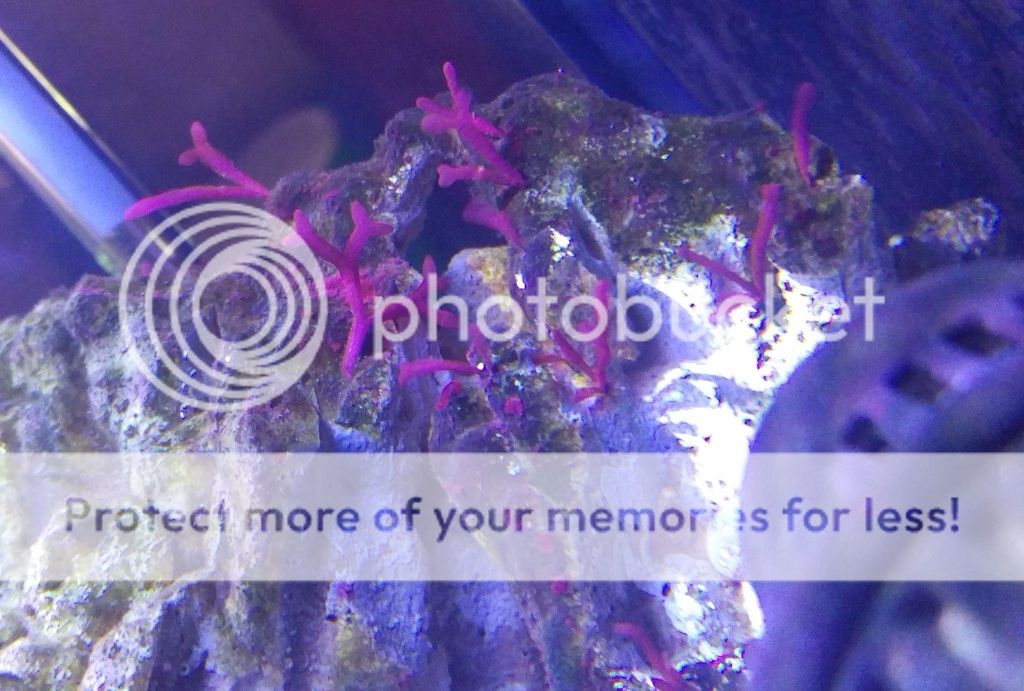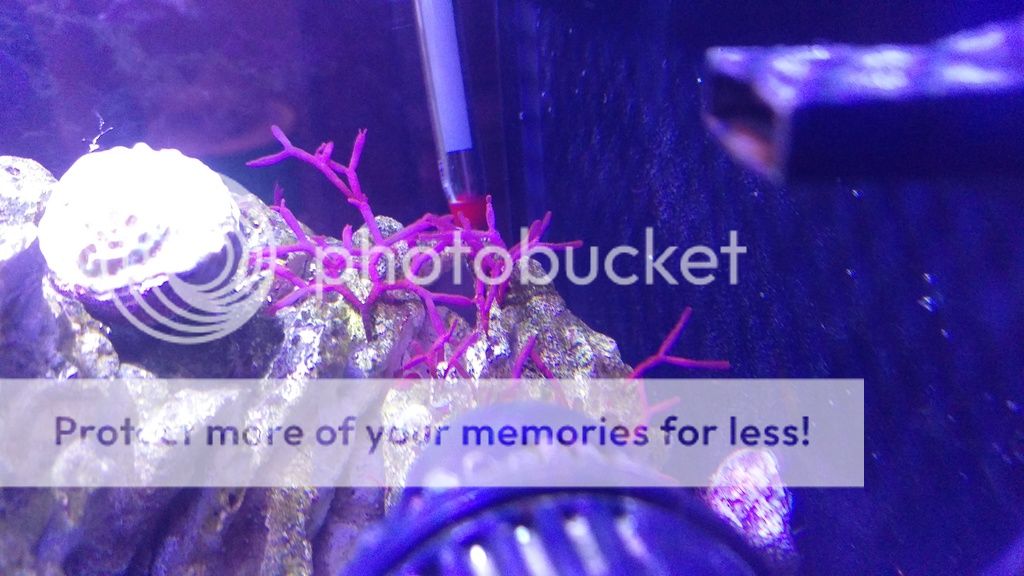chammergren
Member
In January of this year I decided for a number of reasons to venture into the aquarium hobby. My experience with keeping an aquarium is limited to goldfish in a glass bowl as a child and having a few fire belly newts in a water terrarium that my mom took care of when I was 8.
I rarely, if ever, thought about being interested in keeping an aquarium throughout my teenage and college years. Recently, in the grind of what is the Minnesota winter, I got tired of only seeing white and brown when I looked outside. I started watching youtube videos of people who had freshwater aquariums with Discus and other tropical fish. The thought of having color and life contained within my home suddenly became a way for me to escape the ugly cold winter days.
After watching a lot of videos of freshwater tanks I decided to look into the costs of getting a tank that would fit my current apartment well. After a week or so of research, I stumbled across a youtube channel of an American guy living in China who has an incredible reef tank.
https://youtu.be/xaJk8K5ZxCQ?list=PLCXSKSR1qp-vQAUeuFaIuV-BfbXw-Mx1N
I knew that there must be a lot more work involved in setting up and maintaining a reef aquarium but I was amazed by his tank. I wished I could have even a small fraction of the type of tank he had but I was somehow convinced that having no experience in keeping even a freshwater tank I would fail miserably at trying saltwater.
I realized that I would never know for sure unless I tried. I understood that setting up a saltwater would be more expensive than I would plan for (it was) and that it would be more work than freshwater but it would not be impossible. I have a bachelors degree in biology with a minor in chemistry and I work in a microbiology lab. The skills used between scientific work/academia are not the same as those used in reef keeping but I thought some of them had to be transferable or similar at least.
So in February I researched equipment and general reef keeping information. I wanted a small tank because I knew it would cost less and I incorrectly associated smaller with less responsibility in my head. It wasn't until after I had purchased most of my equipment that I realized a smaller tank you lead to less stability and a more fragile environment but my excitement could not be dampened and I forged ahead. By the end of the month I had purchased all of the equipment necessary to begin cycling my tank.
Tank
Innovative Marine Fusion 10 Premium Starter Kit
Stock pump (92 GPH)
Hydor Koralia 240 GPH powerhead
100 Watt Cobalt Neotherm Heater
Filtration
Through the cycle, I used the 200 Micron filter sock that came with the system.
Upgraded after the cycle to the Innovative Marine AUQA Gadget CustomCaddy - Media Basket
Top chamber - Mechanical filtration foam (Fluval Bio Foam)
Middle chamber - Filter bag with Chemi-Pure
Bottom chamber - Poly Filter
Skimmer
Innovative Marine AUQA Gadget Ghost Protein Skimmer - Desktop
Lighting
The premium starter kit I purchased came with the SKKYE Light 18 Watt LED light (6x 3 watt LEDs).
I upgraded to a Kessil A160WE with the gooseneck when I realized the other light would likely severely limit the types of corals I could eventually keep.
Rock
I have roughly 10 LBS of rock in the tank. I purchased 10 LBS of live Pukani rock and 10 LBS of base rock hoping to do half and half. The live rock I received came in as one large piece but I really liked the shape and didn't know exactly how to go about breaking it without proper power tools. In the end I decided to place the large piece leaning against one small piece of base rock in the tank to create an archway. I wish I had less rock in the tank because it is crowded for sure but due to an ongoing battle with diatoms I don't want to remove the large piece and introduce fresh rock with new silicates and the potential for a new cycle.
Substrate
Roughly 10 LBS of CaribSea Arag-Alive Special Grade Reef Sand, Fiji Pink. I have about a 2 inch deep sand bed that over the past couple months I have been slowly siphoning out with water changes. The diatoms I have are pretty persistent so I am trying to remove them with the sand as I go but I have only removed a cup or two of sand total this way.
Day 1 of tank having water, substrate and rock 2/28/16:
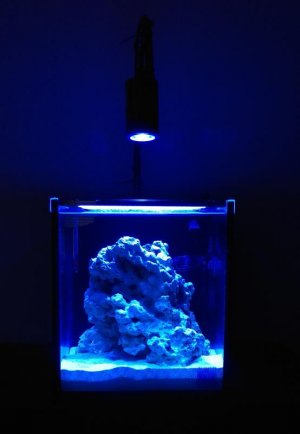
Cycle ended 16 days later 3/14/16.
Tank Inhabitants:
3/18/16:
First tank inhabitants! High Fin Goby and 4 Trochus Snails, all are still alive and well. (Note the start of diatoms in the photo.)
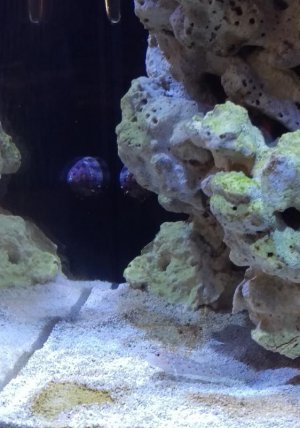
4/2/16:
True Percula Clown (Went carpet surfing when I forgot to put the lid back on the aquarium before work one morning )
)
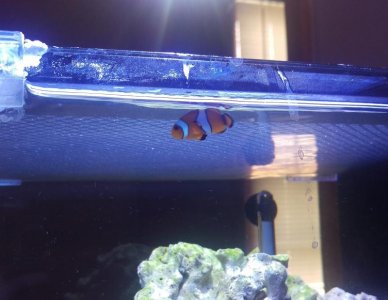
4/15/16:
First corals added to tank once I got the magnesium and calcium levels high enough. Frogspawn, Branched Hammer, GSP. (Note the algae on the live rock forming and the diatoms worsening)
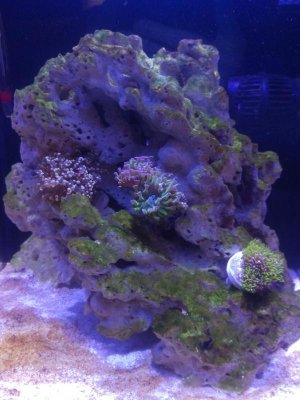
Unfortunately I learned the difficulties of keeping such a small volume of water steady when we had a weekend where temperatures were in the mid 80's for 3 days straight. I made the mistake of not turning on the portable AC unit I have and keeping the temperature in the house low. I had the tank set at 78 degrees and noticed on the second afternoon of the hot weather that the temperature of the tank had jumped to 82 degrees. I closed up the house and started the AC but the time temperature swing in the tank had already stressed my goby. The goby had dug out a cool little cave under the live rock and stayed in there most of the day but would come out to eat mysis twice a day when I would feed him. The next week he came out less frequently even though I had the tank stabilized. Another week and I saw even less of him, I would use a turkey baster to put mysis directly into his lair but when I turned the pump and powerhead back on it would just blow out and around the tank. I ended up lifting the rock to try to get a look at him and he was ravaged by ich. He was covered in it and his fins were shredded. I felt absolutely terrible, like I failed him and that I wasn't proactive in finding out if he was sick. Not to mention, I don't have a quarantine set up and if I decided to try to use medication to help, it would have meant the end for my corals. I ended up putting him out of his misery in the most humane way I could, one strike with a hammer through a ziploc bag with tank water in it, but I decided that until I can afford to have a larger aquarium and a full quarantine set up that I won't be keeping fish, not to mention the ich life cycle in a fallow tank can last 8 weeks before it starves out completely. I feel it is my responsibility to not care for fish without being prepared to take care of them when they are sick.
More catching up in the next post...
I rarely, if ever, thought about being interested in keeping an aquarium throughout my teenage and college years. Recently, in the grind of what is the Minnesota winter, I got tired of only seeing white and brown when I looked outside. I started watching youtube videos of people who had freshwater aquariums with Discus and other tropical fish. The thought of having color and life contained within my home suddenly became a way for me to escape the ugly cold winter days.
After watching a lot of videos of freshwater tanks I decided to look into the costs of getting a tank that would fit my current apartment well. After a week or so of research, I stumbled across a youtube channel of an American guy living in China who has an incredible reef tank.
https://youtu.be/xaJk8K5ZxCQ?list=PLCXSKSR1qp-vQAUeuFaIuV-BfbXw-Mx1N
I knew that there must be a lot more work involved in setting up and maintaining a reef aquarium but I was amazed by his tank. I wished I could have even a small fraction of the type of tank he had but I was somehow convinced that having no experience in keeping even a freshwater tank I would fail miserably at trying saltwater.
I realized that I would never know for sure unless I tried. I understood that setting up a saltwater would be more expensive than I would plan for (it was) and that it would be more work than freshwater but it would not be impossible. I have a bachelors degree in biology with a minor in chemistry and I work in a microbiology lab. The skills used between scientific work/academia are not the same as those used in reef keeping but I thought some of them had to be transferable or similar at least.
So in February I researched equipment and general reef keeping information. I wanted a small tank because I knew it would cost less and I incorrectly associated smaller with less responsibility in my head. It wasn't until after I had purchased most of my equipment that I realized a smaller tank you lead to less stability and a more fragile environment but my excitement could not be dampened and I forged ahead. By the end of the month I had purchased all of the equipment necessary to begin cycling my tank.
Tank
Innovative Marine Fusion 10 Premium Starter Kit
Stock pump (92 GPH)
Hydor Koralia 240 GPH powerhead
100 Watt Cobalt Neotherm Heater
Filtration
Through the cycle, I used the 200 Micron filter sock that came with the system.
Upgraded after the cycle to the Innovative Marine AUQA Gadget CustomCaddy - Media Basket
Top chamber - Mechanical filtration foam (Fluval Bio Foam)
Middle chamber - Filter bag with Chemi-Pure
Bottom chamber - Poly Filter
Skimmer
Innovative Marine AUQA Gadget Ghost Protein Skimmer - Desktop
Lighting
The premium starter kit I purchased came with the SKKYE Light 18 Watt LED light (6x 3 watt LEDs).
I upgraded to a Kessil A160WE with the gooseneck when I realized the other light would likely severely limit the types of corals I could eventually keep.
Rock
I have roughly 10 LBS of rock in the tank. I purchased 10 LBS of live Pukani rock and 10 LBS of base rock hoping to do half and half. The live rock I received came in as one large piece but I really liked the shape and didn't know exactly how to go about breaking it without proper power tools. In the end I decided to place the large piece leaning against one small piece of base rock in the tank to create an archway. I wish I had less rock in the tank because it is crowded for sure but due to an ongoing battle with diatoms I don't want to remove the large piece and introduce fresh rock with new silicates and the potential for a new cycle.
Substrate
Roughly 10 LBS of CaribSea Arag-Alive Special Grade Reef Sand, Fiji Pink. I have about a 2 inch deep sand bed that over the past couple months I have been slowly siphoning out with water changes. The diatoms I have are pretty persistent so I am trying to remove them with the sand as I go but I have only removed a cup or two of sand total this way.
Day 1 of tank having water, substrate and rock 2/28/16:

Cycle ended 16 days later 3/14/16.
Tank Inhabitants:
3/18/16:
First tank inhabitants! High Fin Goby and 4 Trochus Snails, all are still alive and well. (Note the start of diatoms in the photo.)

4/2/16:
True Percula Clown (Went carpet surfing when I forgot to put the lid back on the aquarium before work one morning

4/15/16:
First corals added to tank once I got the magnesium and calcium levels high enough. Frogspawn, Branched Hammer, GSP. (Note the algae on the live rock forming and the diatoms worsening)

Unfortunately I learned the difficulties of keeping such a small volume of water steady when we had a weekend where temperatures were in the mid 80's for 3 days straight. I made the mistake of not turning on the portable AC unit I have and keeping the temperature in the house low. I had the tank set at 78 degrees and noticed on the second afternoon of the hot weather that the temperature of the tank had jumped to 82 degrees. I closed up the house and started the AC but the time temperature swing in the tank had already stressed my goby. The goby had dug out a cool little cave under the live rock and stayed in there most of the day but would come out to eat mysis twice a day when I would feed him. The next week he came out less frequently even though I had the tank stabilized. Another week and I saw even less of him, I would use a turkey baster to put mysis directly into his lair but when I turned the pump and powerhead back on it would just blow out and around the tank. I ended up lifting the rock to try to get a look at him and he was ravaged by ich. He was covered in it and his fins were shredded. I felt absolutely terrible, like I failed him and that I wasn't proactive in finding out if he was sick. Not to mention, I don't have a quarantine set up and if I decided to try to use medication to help, it would have meant the end for my corals. I ended up putting him out of his misery in the most humane way I could, one strike with a hammer through a ziploc bag with tank water in it, but I decided that until I can afford to have a larger aquarium and a full quarantine set up that I won't be keeping fish, not to mention the ich life cycle in a fallow tank can last 8 weeks before it starves out completely. I feel it is my responsibility to not care for fish without being prepared to take care of them when they are sick.
More catching up in the next post...

